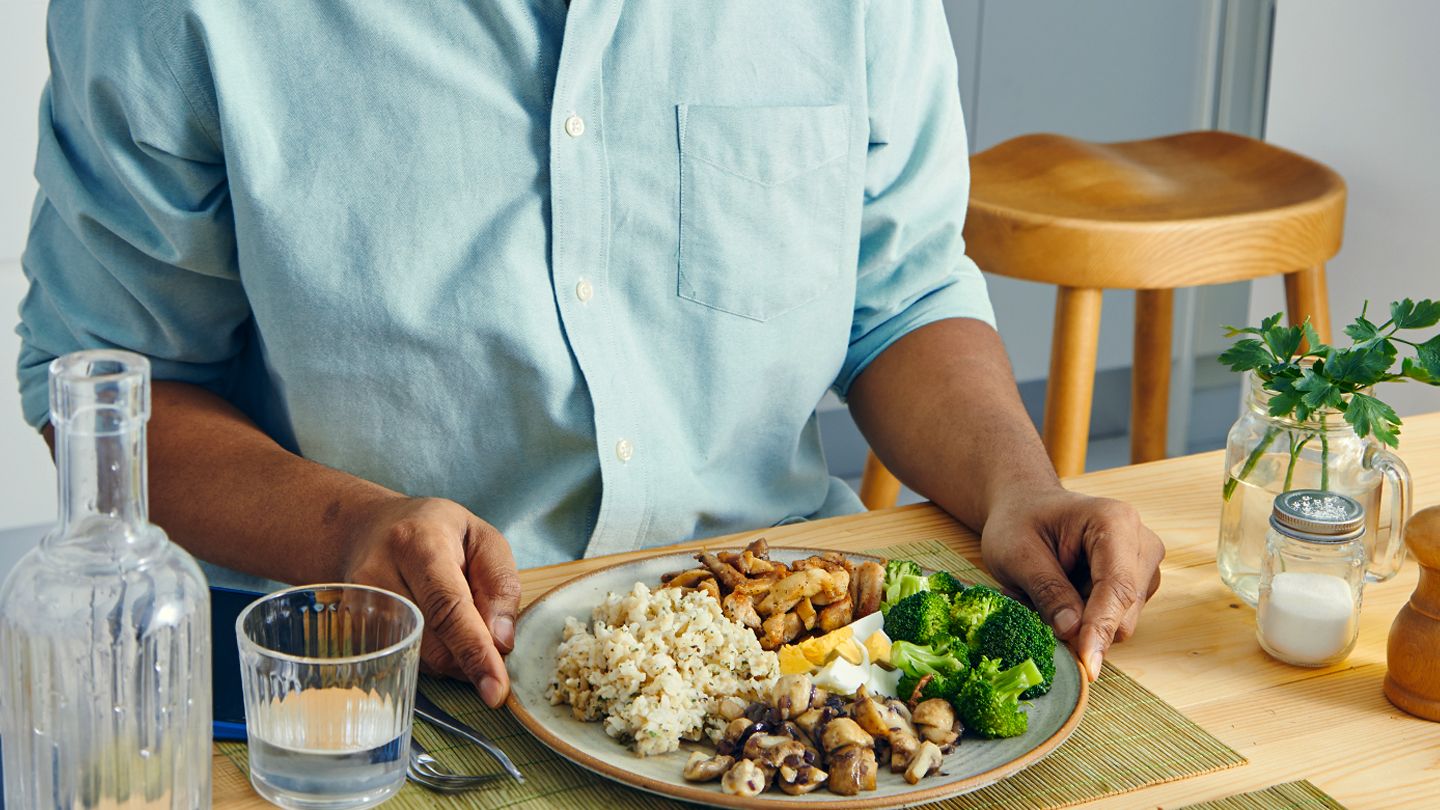Medications called GLP-1 agonists have been known to help manage diabetes, but recently, they’ve gotten more attention for their remarkable ability to support sustainable weight loss.
Specifically, while GLP-1 medications control the release of insulin to help balance your blood sugar levels, they can also decrease your appetite. But does that mean your diet doesn’t matter when you’re on them?
Not exactly. For instance, eating too many carbohydrates can spike blood sugar and work against the effects of the medication — which means watching your diet is crucial.
Keep reading to find out how to eat carbs and sugar while taking GLP-1 medication.
Which Type of Carb Is Best to Eat on a GLP-1 for Weight Loss?
According to Kimberly Gomer, RD, a private-practice nutritionist, figuring out how different carbohydrates impact blood sugar levels is important. While fiber-rich options have a minimal effect, simple sugars can send your blood sugar on a roller coaster. Gomer suggests giving priority to whole and healthy foods and waving off less nutritious options, even if they seem tempting with that reduced appetite.
Choosing smarter carbs usually means going for those high in fiber: complex carbohydrates. Think brown rice, quinoa, oats, apples, berries, broccoli, Brussels sprouts, and sweet potatoes. These carbs take their time to digest, providing a steady release of glucose into the bloodstream — a perfect match for the delayed gastric emptying promoted by GLP-1 receptor agonists.
Research supports the idea that long-term adherence to dietary interventions, such as the Mediterranean diet and low carbohydrate diet, may further enhance sustainable weight loss for those on GLP-1 receptor agonists. So, not only does the choice of carbohydrates play a role in immediate blood sugar management, but it also contributes to the broader goal of achieving lasting weight loss benefits.
How Should I Eat Carbohydrates When Taking a GLP-1?
Even with a smaller appetite, portion control is still a must. Watching how many carbs you’re consuming is crucial for stabilizing blood sugar levels and is a fundamental part of managing carbs effectively.
Consider using tools like measuring cups or a food scale to get a handle on appropriate portions. Once you get the hang of measuring carbs, eyeballing accurate portions when you’re away from home becomes second nature.
Additionally, spreading out your carb intake throughout the day can be a game-changer. Instead of loading up on carbs in one sitting, spread them across multiple meals and snacks, says Catherine Gervacio, RDN, a certified exercise nutrition coach. “Meal spacing should be customized, but generally, having three main meals and one to three snacks is a common approach.” This not only prevents overwhelming your digestive system, but also lets the medication control blood sugar levels more effectively over an extended period.
Managing Sugar in the Diet on GLP-1 for Weight Loss
Did you know that sugar is classified as a carbohydrate? There are two main types: natural and added. Health and wellness expert JB Kirby, DNP, explains: “Sugar is a simple carbohydrate, so it breaks down in the body quickly and causes blood sugar to elevate or spike.” While GLP-1 medications help mitigate this spike, cutting down on sugar remains a key strategy.
But let’s face it — avoiding sugar altogether may be unrealistic. The American Heart Association found that American adults consume an average of 17 teaspoons of added sugar every day, more than two to three times the recommended amount for men and women, respectively. Instead, focus on getting sugar from naturally occurring sources like fruit or dairy.
Another helpful strategy is to read food labels. This helps you to identify and eliminate hidden sources of added sugars. And don’t be fooled by clever marketing — even seemingly healthy foods can harbor added sugar.
By proactively reducing excess sugar in your diet, you contribute to improved blood glucose levels and amplify the benefits of GLP-1 for effective weight loss.
Key Takeaways
Navigating the world of carbs and sugar while taking a GLP-1 receptor agonist for weight loss is all about making strategic choices. Opt for those fiber-rich, complex carbohydrates that keep things steady. Be consistent with portion control, and don’t forget to space your meals out evenly. All of these choices support weight loss and help to build healthy habits long term.
Editorial Sources and Fact-Checking
- Nauck MA, Quast DR, Wefers J, et al. GLP-1 Receptor Agonists in the Treatment of Type 2 Diabetes – State-of-the-Art. Molecular Metabolism. April 8, 2021.
- Capehorn MS, Catarig A-M, Furberg JK, et al. Efficacy and Safety of Once-Weekly Semaglutide 1.0mg Vs. Once-Daily Liraglutide 1.2mg as Add-On to 1-3 Oral Antidiabetic Drugs in Subjects With Type 2 Diabetes. Diabetes & Metabolism. April 2020.
- The Nutrition Source: Carbohydrates and Blood Sugar. Harvard T.H. Chan School of Public Health. Accessed December 19, 2023.
- Lee CY. A Combination of Glucagon-Like Peptide-1 Receptor Agonist and Dietary Intervention Could Be a Promising Approach for Obesity Treatment. Frontiers in Endocrinology. September 20, 2021.
- How Much Sugar Is Too Much? American Heart Association. 2023.

